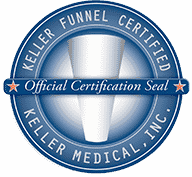What Is A Facelift?
A facelift has remained the gold standard of facial rejuvenation through plastic surgery, correcting sagging in the midface, marionette lines, double chin, and jowls. It is a comprehensive approach for treating wrinkles and sagging skin and ranges from a minimally invasive “lunchtime lift” to a more sophisticated and extensive surgery. During a personalized facelift procedure, excess skin and/or excess fat is removed, and the underlying muscle and tissue is tightened and re-draped over the neck and face.
Types of Facelifts
Overall, there are a number of different facelift techniques that are used today. Each one is highly customizable and addresses each patient’s individual aesthetic concerns. To determine which facelift technique is right for you, Dr. Bohely will examine your face and speak with you regarding your health and anti-aging goals during your consultation appointment.
Traditional Facelift
A traditional facelift focuses on correcting moderate to severe facial aging in the face and neck. Incisions will be created in the hairline at the temples and continue around the ear, ending in the lower scalp. Dr. Bohley will sculpt and redistribute fat in the face, jowls, and neck, as well as lift the deeper layers of the face to achieve a refreshed and youthful appearance. This procedure is also often combined with other procedures such as a brow lift or eyelid surgery for more drastic results.
Mini Facelift
A mini facelift may be a good option for patients with a small amount of lax skin on the lower face and neck, as the results are less drastic than a traditional facelift. However, because this procedure is less involved, recovery time is shorter. This procedure involves shorter incisions at the temples that continue around the ear.
Mid-Facelift
As we age, our cheeks can become flattened or lax, making us appear older than we feel. A mid-facelift targets lax skin in the cheek and midface area. In instances where a traditional facelift cannot fully treat the upper cheek areas, a mid-facelift may be an effective option. Small incisions will be made around the hairline and ear, through which an endoscopic camera is inserted to tighten and smooth the muscles, as well as elevate the cheek fat pads.
Temporal Facelift or Browlift
Individuals who are bothered by the look of aging brows can often benefit from a temporal facelift. This technique focuses on the top half of the face for a lifted look, without having to undergo a brow lift. Dr. Bohley will create incisions near the temples, through which the skin on the forehead will be lifted to achieve the desired results.
Liquid Facelift
For individuals who are seeking a non-surgical solution to smooth folds and creases in the face, a liquid facelift using dermal fillers is an effective option. At our office, we use Juvéderm dermal fillers such are created using hyaluronic acid (HA) which is a naturally occurring substance that attracts and binds water under the skin. It works by adding youthful volume to smooth lines, wrinkles, and folds for a more youthful appearance. Juvéderm can last up to one year with optimal treatment.
Am I A Good Candidate For A Facelift?
You are a good candidate for facelift surgery in Portland if you have:
- Sagging in your jawline and/or midface
- Nasolabial folds (nose to the corners of the mouth)
- Marionette lines (mouth down to the chin)
- Facial volume has fallen/displaced
- Loss of muscle tone, double chin
- Creasing, and sagging on the neck
Ideal candidates must have realistic expectations from their facelift surgery, as the results from your procedure may vary from other patients. Some may require secondary or complementary surgery to achieve their desired goals.
Double board-certified plastic surgeon Dr. Michael Bohley recommends this procedure for individuals with deep wrinkles who wish to reduce the signs of aging. He personally performs pre-surgical evaluations and consultations to fully understand his Portland and Vancouver, Washington patients’ concerns and aesthetic goals. He works closely with his facelift patients in order to create personalized treatment plans that yield stunning results.
Facelift FAQs
Does a facelift make you look younger?
How can I tighten loose skin on my face?
How do I prepare for a facelift?
How do I tighten my jawline?
How do you reduce swelling after a facelift?
How long after a facelift can I exercise?
How long do ears hurt after facelift?
How long does facelift last?
How long does it take for bruising on the face to go away?
How is the facelift done?
What is a facelift?
What questions should I ask my facelift surgeon?
Do I need fillers or a surgical facelift?
How long does it take for a facelift to look normal?
How long do I need to sleep upright after a facelift?
How much does a facelift cost in Portland, Oregon?
What is the best age to get a facelift?
What are the results of a facelift in your 40s?
When will I see the final results of my facelift?
What is recovery like after a facelift?
What can a facelift improve?
What Is The Recovery From A Facelift?
Even though your surgeon will advise you about your individual recovery time and activity levels, be prepared to wait around six months for complete results. For the first 48 hours, you will have compression bandaging and drains covering your face and scalp. Swelling can be controlled by keeping your head elevated, even when sleeping, for two weeks. many facelift patients feel good enough to go back to work after about a week or two.
For at least four weeks you must avoid submerging in water and athletic activity. Please call our office if you have any questions during your recovery period.
Facelift Results
The one factor that determines it the most is the specific facelift techniques that are used for your unique signs of facial aging. For less extensive surgeries like a mini facelift (S-lift), recovery is fast and the results last up to five years. A full facelift has a longer recovery time, but the results last over 10 years. Some people have just the lower face treated whereas others benefit more from treating the face and neck. The more extensive the procedure, the longer you will enjoy the results.
Schedule A Consultation About Facelift Today
Even if you’re still not sure whether you need or want a facelift, if you have concerns about your aging face, don’t hesitate to contact us by calling our office or filling out an online contact form. Dr. Bohley is happy to take the time to examine your concerns and offer his professional opinion on what treatment or surgery is best for your specific issues and anatomy.
Dr. Michael Bohley is a double board-certified plastic surgeon recognized as one of Portland’s leading experts in body, breast, and facial cosmetic procedures. With years of advanced training and a distinguished surgical career, he combines refined aesthetic judgment with meticulous technique to deliver consistently exceptional results. Renowned for his skill in tummy tucks, liposuction, breast augmentation, and mommy makeovers, Dr. Bohley develops highly individualized treatment plans to meet each patient’s unique goals. His dedication to patient education, safety, and precision has earned him membership in numerous prestigious professional organizations and the trust of patients throughout the greater Portland area.










